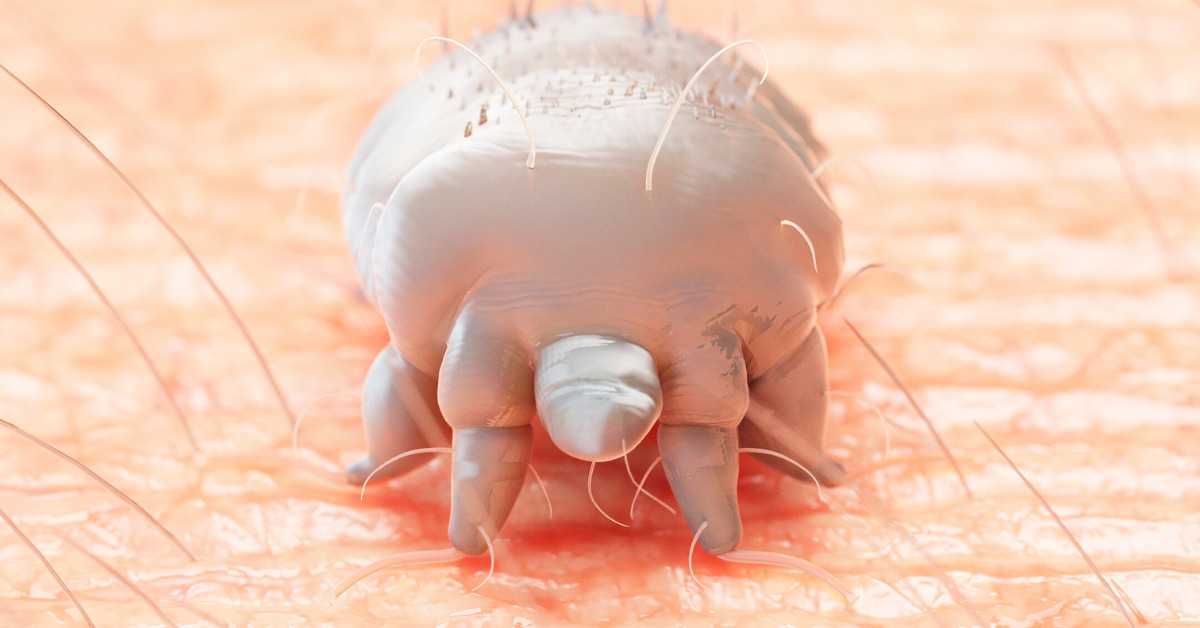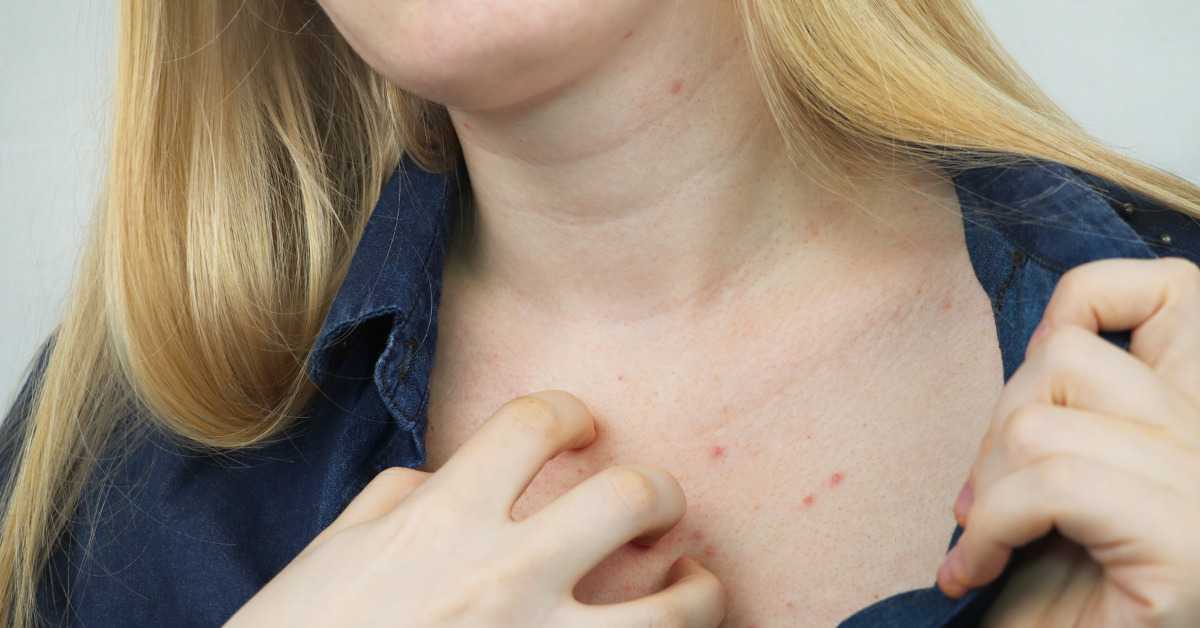Tired of scratching your skin not knowing the cause? Hold your breath because it might be scabies! Keep reading if you want to know all the causes and symptoms of scabies.
Sarcoptes scabiei, a tiny burrowing mite, causes scabies, an itchy skin condition. There is a lot of itching in the area where the mite burrows. At night, the desire to scratch may be extreme. Scabies is contagious and spread quickly in a family, child care group, school class, nursing home, or prison through close physical contact.
Because scabies is so contagious, doctors frequently advise treating entire families or groups of people. Scabies is easily treatable. Medications applied to the skin kill the mites that cause scabies and their eggs. However, you may experience itching for several weeks after treatment.


Symptoms
The following are some of the signs and symptoms of scabies:
- Itching, which is usually severe and worse at night.
- Burrow tracks are made up of tiny blisters or bumps on your skin that are thin and irregular.
Burrows or tracks are most commonly found in skin folds. Scabies can affect almost any part of the body, but it is most commonly found in adults and older children:
- Fingertips
- Along the insides of the wrists
- Around the waist
- Inside the elbows
- On the soles of the feet
- Around the breasts
- In the vicinity of the male genital area
- On the backs of the buttocks
- On your knees


Causes
Scabies is caused by a mite infestation, which is the only cause, and the adult female is to blame. Scabies is typically transmitted through skin-to-skin contact with someone infected with the mite, which can happen in a few different ways.
The Mite
The female mite burrows deep into an infected human host’s skin, where she lays eggs that hatch into larvae. As the infected human mounts an immune response, multiple larvae mature, causing itching and rash symptoms. The symptoms and inflammation are exacerbated (worsened) due to this.
The adult form of the larvae can mate while living and feeding on the body of its human host. A pregnant female mite can spread the infection to another person through close human contact, where she can start the whole process all over again.
Close Encounters
The most common cause is close and prolonged skin contact with someone who has scabies. In most cases, close family members and people who live together can easily spread the infection. Scabies is often, but not always, transmitted by sexual partners in adults. However, scabies is not a sexually transmitted disease. Reinfection is common in these situations, as infected people can pass the mite on to people who have already had scabies and have been treated.
Contaminated blankets and other items can also cause reinfection. Even contact with a professional massage therapist can spread the infection. Scabies infection is rarely spread through casual contacts, such as a handshake.
Contaminated Items
Scabies can be spread through households and residential facilities. The mite can survive on furniture, bedding, towels, and clothing for several days, allowing the infection to spread. However, this only occurs when a person has a severe infection.
Complications
While anyone can get scabies and develop the common form of infection, Crusted (Norwegian) scabies are more likely to occur in people whose immune systems are compromised due to HIV infection, leukemia (blood cancer), chemotherapy, treatment with other immunosuppressive medications, or severe nutritional deficiency. This is a more dangerous type of infection.
Scratching too hard can break your skin, allowing a secondary bacterial infection like impetigo to develop. Impetigo is a skin infection caused mostly by staph (staphylococci) bacteria, but strep (streptococci) bacteria can also cause it.


Prevention and Treatment
Take the following steps to avoid re-infestation and the spread of the mites to other people:
- Wash all your clothes. All clothing, towels, and bedding used within three days of starting treatment should be washed in hot, soapy water. High heat is used to dry. Items that can’t be washed at home must be dry cleaned.
- Starve the mites to death. Place items you can’t wash in a sealed plastic bag and store it somewhere out of the way, like your garage, for a couple of weeks. After a few days without food, mites die.
The treatment for scabies includes medications such as topical creams or lotions. The doctor may ask you to apply the creams on the whole body and leave it for at least eight to ten hours, or even longer. As scabies spreads very quickly, everyone in the household will have to apply the lotion, even if they don’t show any symptoms.
Home remedies for scabies include:
- Soak and cool your skin
- Apply a soothing lotion
- Take antihistamines, only with a doctor’s prescription
Read more about other home remedies for scabies.
Scabies mites can survive for as long as two months on a person. On the other hand, the mites usually die within three to four days after they’ve been removed from a person. If you’re treating scabies, the itching and burning caused by the rash will likely last for several weeks after you’ve started treatment. Even if the mites are dead, the eggs and mite waste are still present in your skin. You may still have a rash and irritation until your skin grows new layers. To get proper treatment, visit a dermatologist and get rid of scabies today!
FAQs
1. What kills scabies fast?
Topical creams such as Ivermectin are effective to get rid of scabies.
2. How do I know if I have scabies?
Itching, rash and sores are common symptoms of scabies.
3. Is scabies an unhygienic issue?
Scabies does not imply that a person is “unclean.” Instead, it means that a person has been in close proximity to someone—or something—who is infected.
4. How long does scabies last for?
Medicines kill the insect effectively, but the rash may last for several weeks. However, the marks on the skin go away after some weeks to months.
5. Do I have to change my mattress if I get scabies?
It is not necessary to clean your mattress, but it is a good idea. Remove all bedding from the mattress and vacuum both sides thoroughly, using the crevice attachment to get between seams and folds.
Book an appointment now, to answer all your queries. You can book an appointment with the top dermatologists in Pakistan through Marham by calling at Marham helpline: 0311-1222398 or by online booking facility through the website or Marham mobile app.
Can’t Find The App?
Android Users:
https://play.google.com/store/apps/details?id=controllers.marham.marhammed&hl=en
Drop a review for us at Playstore if you’ve had a good experience!
iPhone Users:
https://apps.apple.com/pk/app/marham-find-a-doctor/id1095243102
Stay Home. Stay Safe!

